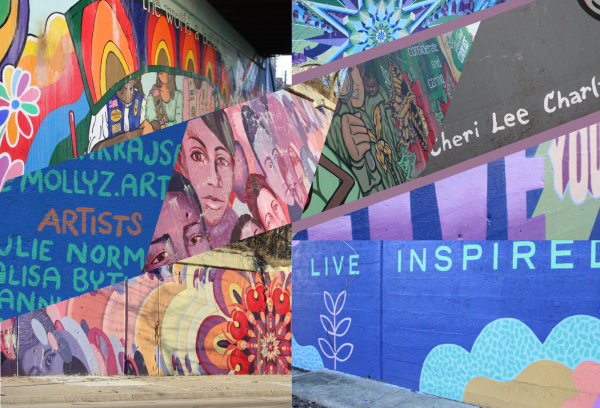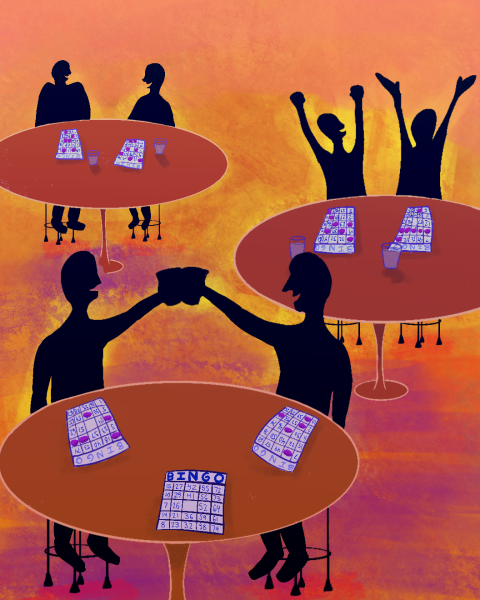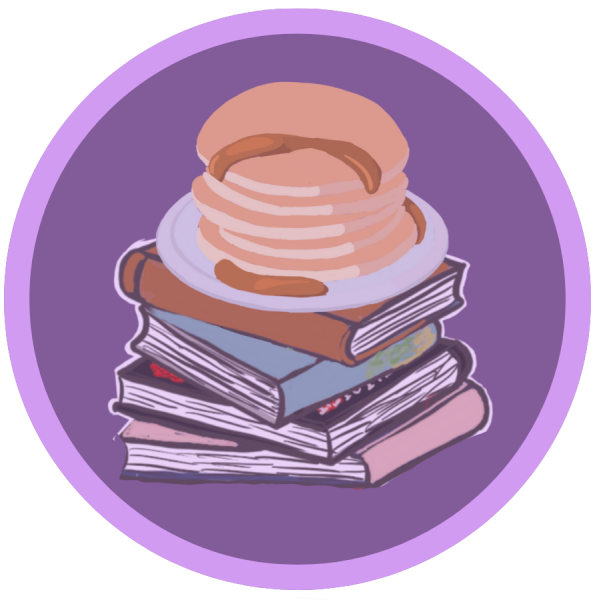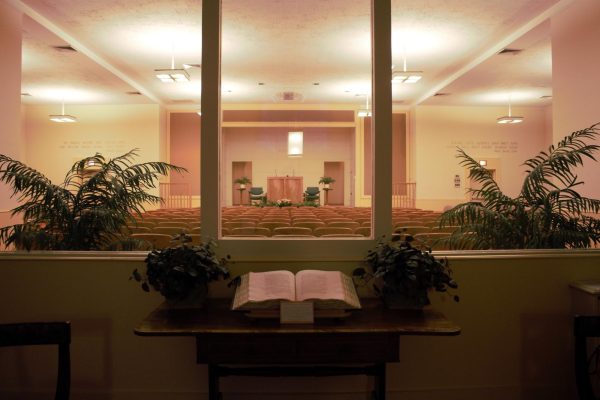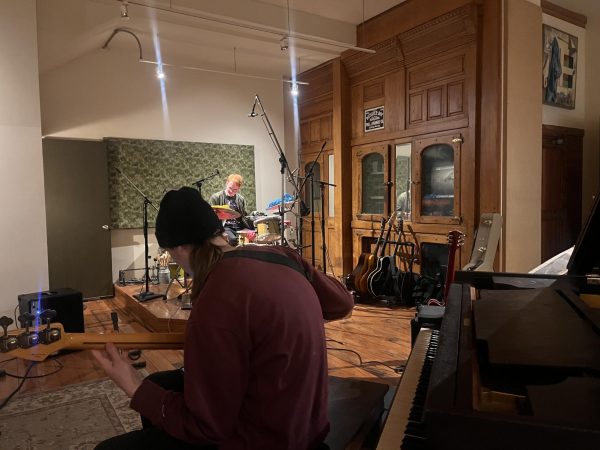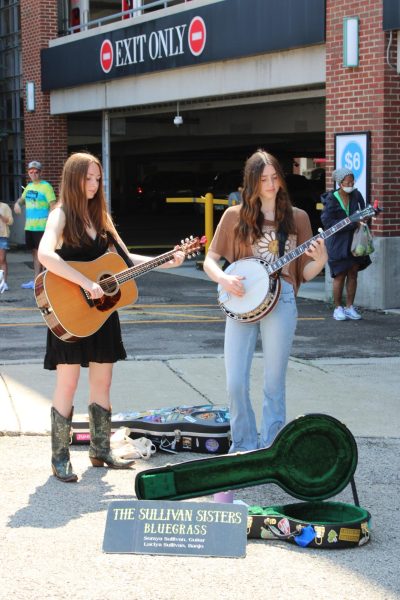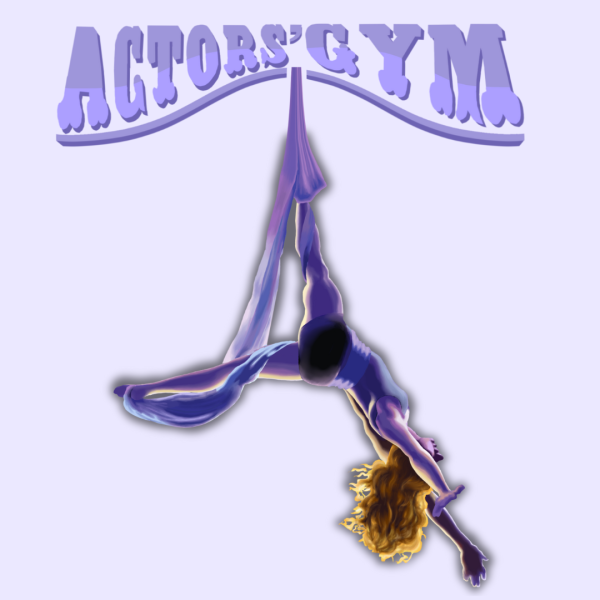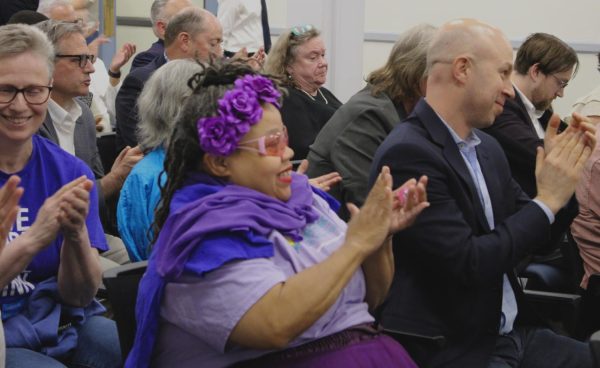ETHS works to maximize COVID-19 protocol compliance
In every capacity, ETHS has been closely following the COVID-19 guidelines for both the CDC and the IDPH. All HVAC filters have been replaced with MERV 13 filters, meaning that the air quality and circulation has vastly improved. Every room in the building has a PPE kit, with sanitizing and self-protection equipment. Masks are required. Vaccinations are strongly recommended.
On paper, ETHS appears to be doing an excellent job keeping students and staff safe. But the actual in-school experience is less reassuring than that. Across the school, there are major hesitations and frustrations due to a lack of COVID-19 guideline implementation.
Junior Delilah Salzinski has had a rollercoaster of experiences. The last time she was in the school was her freshman year, and what she’s seen so far from the COVID-19 response has left much to the imagination, especially in the hallways.
“During the passing periods, the halls are overcrowded, especially after eighth period. Everyone is trying to make their way out of the building,” she says. “I have seen some people with their masks down, eating in class or [walking] in the hallways. I’ve noticed some teachers and staff having to tell students to put their masks back on.”
“I’m vaccinated, so that definitely helps me feel safe. But it is a little stressful because [in hallways] you’re pressed up against everyone else,” she says.
Senior Maeval Abby Teodoro shares this sentiment, saying that the density of the hallways is less than ideal.
“Especially with North Hall around lunch time, it’s always packed side to side with students. I think the new lunch periods are to blame. Half the school is in each lunch period.”
Social studies teacher Andrew Ginsberg notices that he, unlike the students, has the ability to not have to move around the school at the same time as the students do.
“I try to always try not to go in the hallway when there are a gazillion kids in the hall,” Ginsberg says. “But those are my teacher privileges. I can avoid that. I see some kids without masks in the hallways. And I wonder if I should say something as an adult.”
Lunch is a time of day of concern for certain ETHS staff and students as well. Junior Sammi Lewis is uneasy towards the safety of students who are eating in indoor cafeterias.
“I’ve been eating outside, but I had to go to the cafeteria one time. I felt really uncomfortable because I saw all these people laughing and spitting in a room together is the worst thing we could have had during COVID. We should have mandated eating outside.”
Senior Maeval Abby Toedoro shares this concern. “During lunch, and when we’re unmasking and we’re all in the same place, especially in the cafeterias, it seems pretty unsafe to me. I’m just worrying about how it will be when the weather starts getting too cold for us to have that option.”
Assistant Superintendent and Principal Marcus Campbell has heard these concerns and is working to find solutions that will make as many students comfortable as possible.
“We plan to have the courtyards open for lunch as long as possible. They’ll probably be open all year, except for if it’s extremely cold,” he says. “We are going to set up the auditorium for lunch…and the stands and Beardsley Gym, where people can eat and [hang] out. We’re fortunate to have a school where we have all of these spaces… to lounge and hang out; a lot of schools don’t have that.”
All in all, Campbell thinks the school has handled the complex challenge that is COVID-19 successfully.
“I’m proud that everybody’s been, for the most part, following protocols,” he says. “I see a few masks down [below the] nose, and we have to remind folks to make sure your mask is over your nose, but that’s about it. Students and staff have been following protocols in the halls and classrooms.”
In classrooms, however, the school year started with at least a few protocol breaches. Multiple students recall experiences with a teacher not following COVID-19 guidelines early on in the school year.
This appears to be the exception rather than the rule, however. For instance, in Ginsberg’s classroom, COVID-19 safety is highly valued.
“I have a few kids who wear their masks below their noses. I have some masks that I’m giving away [for that reason]. But it’s not actually that bad. I have a COVID-compliance person in every class to [make sure guidelines are being followed].”
Since Aug. 6, there have only been eleven reported cases of COVID-19 in the student body and six reported cases from staff. The school has also documented 2,846 student and 544 staff proofs of vaccination.
The new state-wide vaccine mandate for staff has been a leap in the right direction.
“If staff don’t show proof of vaccination, they have to commit to weekly [COVID-19] testing,” Campbell says.
Since Gov. Pritzker announced the mandate for teachers to either become vaccinated or submit weekly COVID-19 tests, over 100 additional staff members submitted their vaccine cards to the school, helping the number of on-record vaccinated staff go from 434 on Aug. 27 to 544 on Sep. 10.
It hasn’t proven to be as easy to gather full information about how vaccinated the student population is.
“Around 20 percent of my students haven’t submitted proof of vaccination,” says Ginsberg. “If I have a student that is a strong anti-vaxxer, I’m hoping I could influence that once I have a better relationship with them.”
Ginsberg looks back at his experience so far and recalls that students have been rather flexible so far.
“There’s a lot of goodwill from the students, which has been nice. Being here and being present, and not just physically present, but mentally present, has been really good.”
Your donation will support the student journalists of the Evanstonian. We are planning a big trip to the Journalism Educators Association conference in Philadelphia in November 2023, and any support will go towards making that trip a reality. Contributions will appear as a charge from SNOSite. Donations are NOT tax-deductible.


